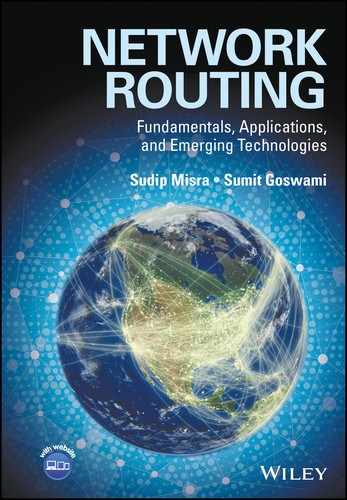Foreword
Network routing has evolved over the past 65 years, and this book systematically makes its readers traverse this journey of evolution of network routing through its 500 plus pages. With ‘nano’ on the anvil, an in‐depth understanding of present and past routing technologies is essential to explore future innovations and discoveries. The book will uniquely prepare its readers to face the toughest routing challenges in all varieties of networks owing to the tremendous effort put into presenting detailed illustrations throughout the book to aid learning.
The book delivers its contents in five parts: fundamental concepts, routing in QoS and traffic engineering, routing on the Internet, other routing contexts (ATM, cellular wireless networks, wireless ad hoc networks, wireless sensor networks, 6LoWPAN), and advanced concepts pertaining to security and reliability. It demonstrates the commitment of the authors to connect from history to the future through the contemporary. There are a total of 14 chapters, with many figures, questions, and exercises. The core of the book lies in its coverage of all routing mechanisms under a single source, with special mention of its unprecedented collection of routing techniques in the entire range of wireless networks. IoT is a game changer, and this book has a chapter on 6LoWPAN too. Demands also remain among the network administrators for network management and network security, which together form the backbone for supporting efficient and fault‐free routing. This book will definitely build on the confidence of network researchers and administrators in this area too. In addition, it introduces a few topics of upcoming interest – attack surfaces, smart systems, mobile agents, networked battlefields, and cognitive security.
While the book has focused on present‐day routing techniques, it has not lost sight of the basic routing protocols and algorithms, which have been explained in depth. Teaching materials in the form of presentations in sync with the chapters are also made available by the authors. Answers to all the questions have been provided. However, solution to only selective exercise questions have been uploaded onto the website of the book, so as to ensure sustained memory performance leading to different possible solutions.
The book will steward its readers on the journey from legacy networks to future‐generation networks.
